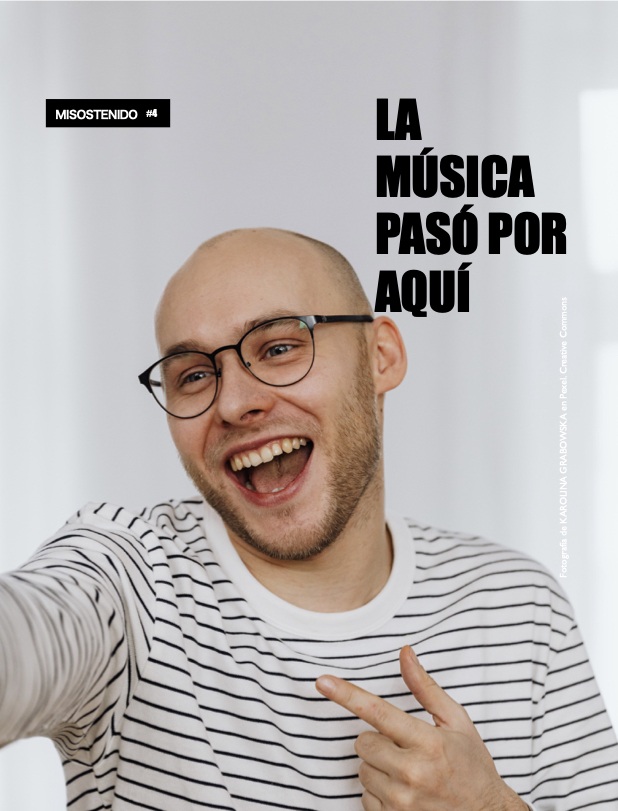Music therapy in children with Sanfilippo Syndrome at the CIM in Bilbao.
Keywords:
Music therapy, mucopolysaccharidosis III, sanfilippo syndrome, anxiety state, neurocognitive indicatorsAbstract
The development of an open clinical trial with 4 children diagnosed with Sanfilippo Syndrome, residents of Bizkaia, is presented in order to analyze the influence of music therapy on longterm neurocognitive parameters and biological parameters, as a reflection of anxiety. short term. A systematic conviction was carried out. The study focused on the evaluation of individual sessions (1 per week) at the CIM (Music Therapy Research Center) in Bilbao during the months of February to June 2015. Before and after each session, biological variables of the state were taken. Of anxiety. Each session began and ended with a musical passage. The general and musical rhythm of the session was adapted to the measured heart rate of the patient and the melodies that arose to his state of mind. The compressors were collected in the neurocognitive indicators and we observed a reduction in all the biological variables representative of anxiety, without a decrease in saturation at the end of the sessions. An improvement in physical and socio-emotional aspects was also demonstrated throughout the sessions.
Downloads
References
Almeida, M., Prado, A., Schenkel, G., Barreto, R., Acosta, A.X. (2013). Energy expenditure during gait in patients with muco-polysaccharidosis. Acta Ortop Bras. p 116-119. Recuperado de:http://www.scielo.br/aorb.
American Music Asociation. (2015). What is the profession of Music Therapy? Recuperado de: http://www.musictherapy .org.
Brady , J., Tretan, A., Landis, D. and Toro, C. (2013). Mucopolysaccharidosis type IIIB (MPS IIIB) masquearing as a behavioural disorder. BMJ Case report. 2013.
Delaney, K. A, Rudse,r K.R., Yund, B.D., Whitley, C.B., Hasslett, P.A.J. and Shapiro, E.G. (2013). Methods of Neurodevelopmental Assessment in Children with Neurodegenerative Disease: Sanfilippo Syndrome. JIMD, p. 129-137. 35MUSICOTERAPIA EN NIÑOS CON SÍNDROME SANFILIPPO EN EL CIM DE BILBAO
Delgadillo, V., O,Callaghan, M.M., Gort, L., Coll, M.J. y Pineda, M. (2013). Natural history of Sanfilippo in Spain. Orphanet of Rare Diseases, p. 8-189.
Geretsegger, M., Holck, U. y Gold, C. (2012). Randomized controlled trial of improvisational music therapy ́s effectiveness for children with autism spectrum disorders (TIME-A): study protocolo.BMC.5. p.12-2.
Ghasemtabar, S.N., Hosseini, M., Fayyaz, I., Arab, S., Naghashian, H. y Poudineh, Z. (2015). Adv Biomed. P. 4-157.
Hardy, M.W., Lagasse, A.B. (2013). Rhythm, movement and autism using rhythmic rehabilitation research as a model for autism. Front Intergr Neurosc. P.19.
Ikonomidou, E., Rehnström, A. and Naesh, O. (2004). Effect of music on vital signs and postoperative pain. AORN J. p. 269-74, 277-8.
Jabourian, A., Turpin, J.C., Maire, I. y Baumann N. (2011). Autistic-like disorders and Sanfilippo syndrome. Ann Med Psicol.2011. p.421-26.
Lagasse, A.B. (2014). Effects of a music therapy group intervention on enhancing social skills in children with autism. Music Therapy. P.250-75.
Madden, J.R., Mowry, P., Gao, D., Cullen, P. and Kore-man, N.K. (2010). Creative Arts Therapy Improves Quality of Life for Pediatric Brain Tumor Patients Receiving Outpatient Chemotherapy. Journal of Oncology Nursing. p.133-145.
Miyazaki, T., Masuda, N. and Waragai, M., et al. (2002). An adult Japanese San Filippo A patient with novel compound heterozygous S347F and D444G mutations in the sulphamidase gene. J Neurol Neurosurgery Psychiatry, p.777-778.
Moreno Núñez, A., Rodríguez, C., Del Olmo, M.J. (2015). The Rhythmic, Sonorous and Melodic Components of Adults-Child object Interactions Between 2 and 6 Months Old. Integr Psichol Sci. p. 737-756.
Mok, E., Wong, K.Y. (2003). Effects of music on patient anxiety. AORN J. p.396-7, 401-6, 409-10.16.
Pittman, S. and Kridli, S. (2011). Music intervention and preoperative anxiety: an integrative review. Int Nurs Rev. p.157-63.
Rumsey, R.K., Rudser, K., Delaney, K., Potegal, M., Whitley, C.B. y Shapiro, E. (2014). Acquires Autistic Behaviors in Children with Mucopolysaccharidosis Type IIIA. J Pediatr. p.1147-1151.
Valstar, M.J., Marchal, J.P., Grootenhuis, M., Colland, V. and Wijburg, F.A. (2011). Cognitive development in patients with Mucopolysaccharidosis type III (San-filippo syndrome). Orphaned Journal of Rare Diseases. P.6-43.
Valstar, M. J., Ruijer, G.J.G., van Diggen, O.P., Poorthuis, B.J. and Wijburg, F.A. (2008). Sanfilippo syndrome: a mini review. J Inherit Metab Dis, p. 240-252.
White, K.K., MSc, Karol, L.A., White, D.R. and Hale, S. (2011). Musculoskeletal Manifestations of San Filippo Syndrome (Mucopolysaccharidosis Tipe III). J Pediatri Orthop. P. 594-598.
Wijburg, F.A., Wegrzyn, G., Burton, B.K. and Tylki-Szymanska, A. (2013). Mucopolysaccharidosis type III (San Filippo symdrome) and misdiagnosis of idiopathic developmental delay, attention deficit/hyperactivity disorder or autisim spectrum disorder. Acta Paediatrica. p.462-470.Wigram, T. (2016). Methods and Techniques for Music Therapy Clinicians, Educators and Students. p.23-56. Jessica Kingley Publishers.








